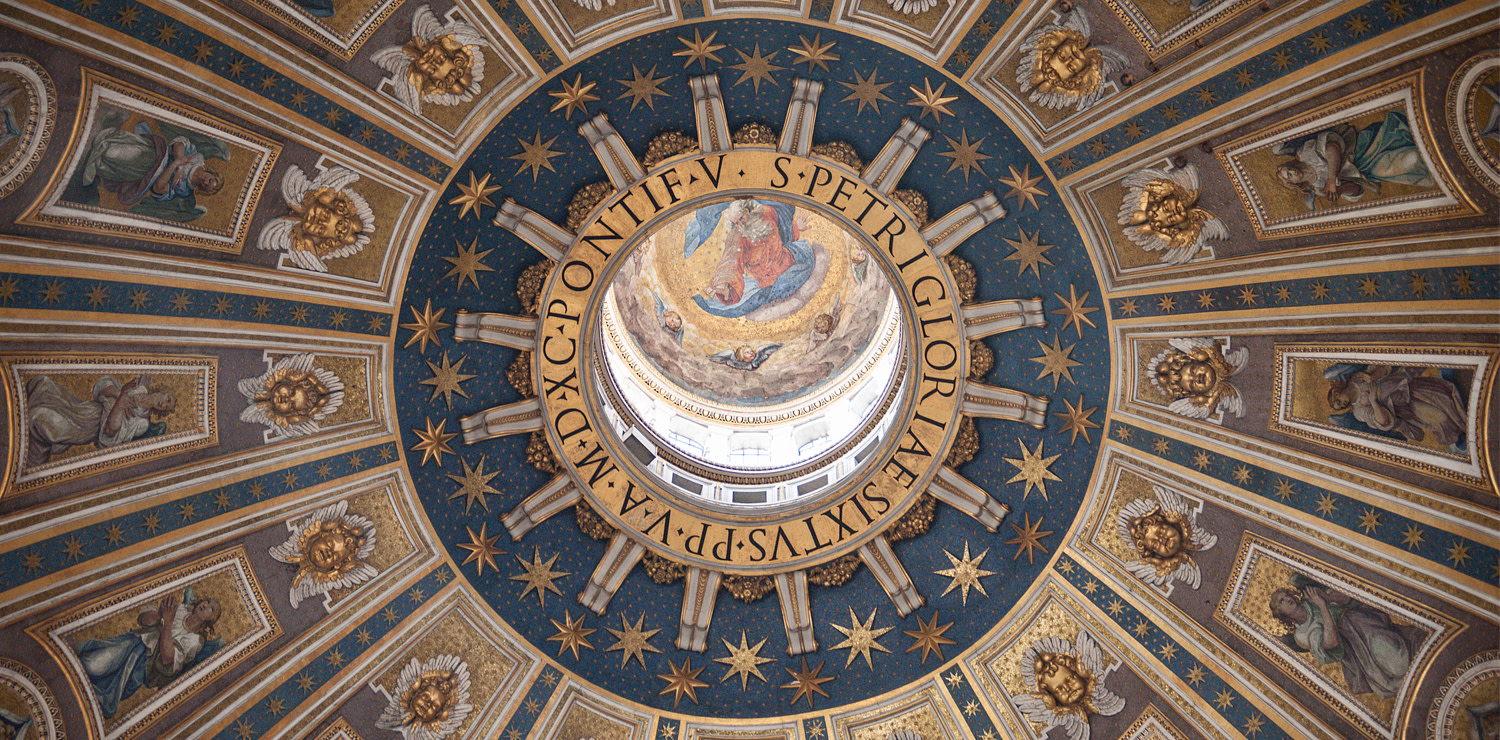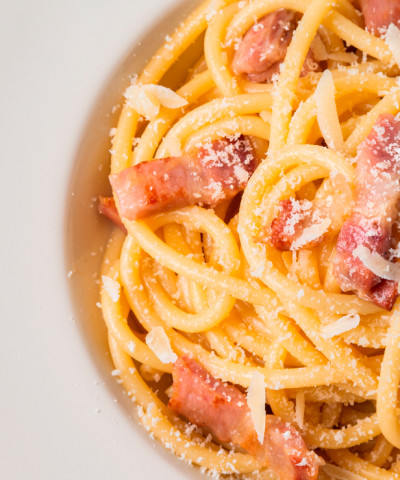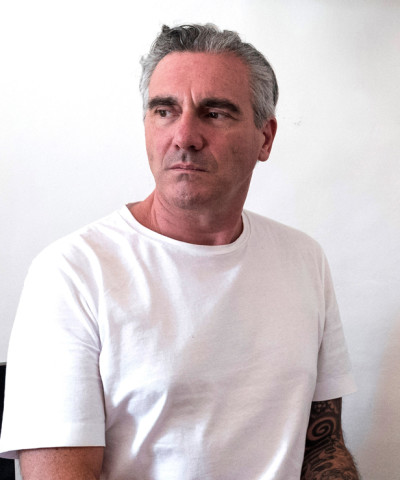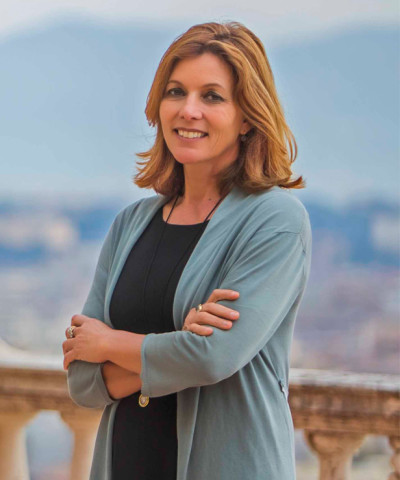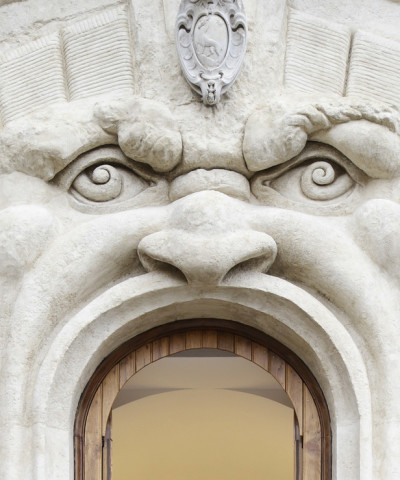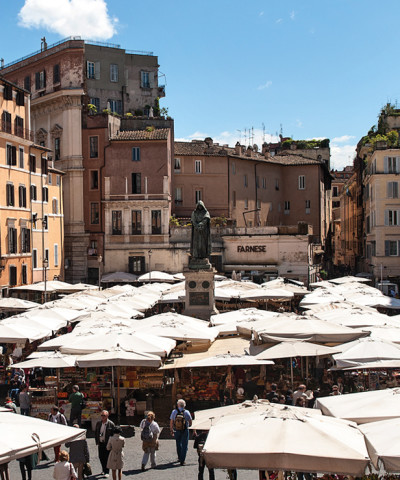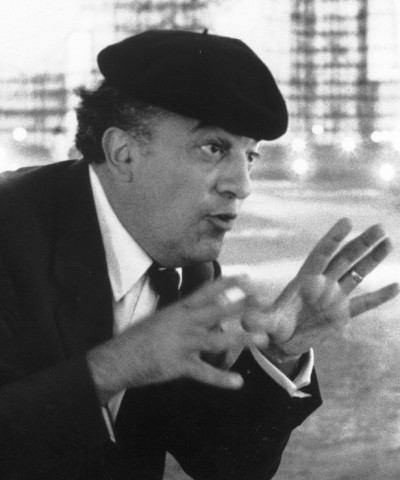The Seven Churches of Rome
An evergreen pilgrimage. Its legends, history and anecdotes
Praying and walking: seven times, just like seven are the deadly sins, the virtues, the sacraments and the seals of God. The Seven Pilgrim Churches of Rome became common practice during the first Jubilee in the 1300s, with a pilgrimage being required to obtain the indulgences. But the long 20-km walk, if not associated with penance, was seen as a great waste of time and energy, as the saying goes. The tradition of visiting seven churches was thus reintroduced by Filippo Neri around the mid-1500s. The famous Saint, Florentine by birth and Roman by adoption, who went down in history for having established the first parish youth clubs and rescued orphans and abandoned children from the streets, must have realized that praying and walking was the perfect solution to the problem of calming down a bunch of hot-head kids.
The same idea must have occurred to Pope Sixtus V, about thirty years later, when he decided to cool the carnival ardor of the faithful by replacing the partying held on Thursday before Lent with the tour of seven churches as an act of penance and, thus, found a way to reorganize the road system by introducing new and functional rectilinear roads. And although the imposition was quite unsuccessful, the ritual of visiting seven different churches remained as a custom.
The itinerary drawn up by Saint Philip is still the general rule. It is best to proceed counterclockwise starting from San Paolo Fuori le Mura.
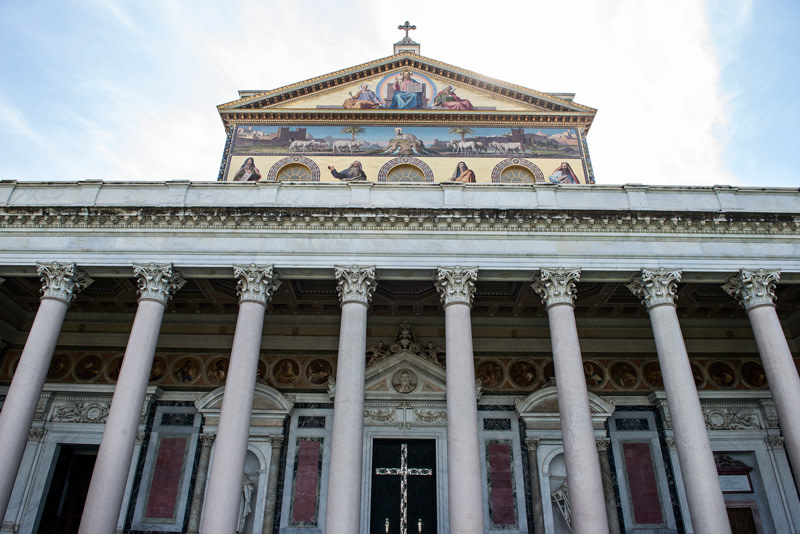 San Paolo Fuori le Mura
San Paolo Fuori le MuraThis ancient papal basilica (owned by Vatican City along with Saint John in the Lateran and Saint Mary Major), which was founded over the burial place of St. Paul, was nearly completely destroyed by a fire in the 1800s set by a workman. All that remains of the ancient basilica, the second largest church following St. Peter’s, are several mosaics by Pietro Cavallini, the beautiful tabernacle by Arnolfo di Cambio, the Galla Placidia mosaics and those in the apse. By going eastwards, we reach San Sebastiano Fuori le Mura along the Appia Antica road. The church was also temporarily used as the burial place of the remains of Peter and Paul. The church is currently best known for Bernini’s Salvator Mundi, for the catacombs accessed through the Cubicolo di Giona with paintings dating back to the 4th century and for the marble slab with Jesus’s footprints in the nearby church of Domine quo vadis? We then reach San Giovanni in Laterano by walking northwards.
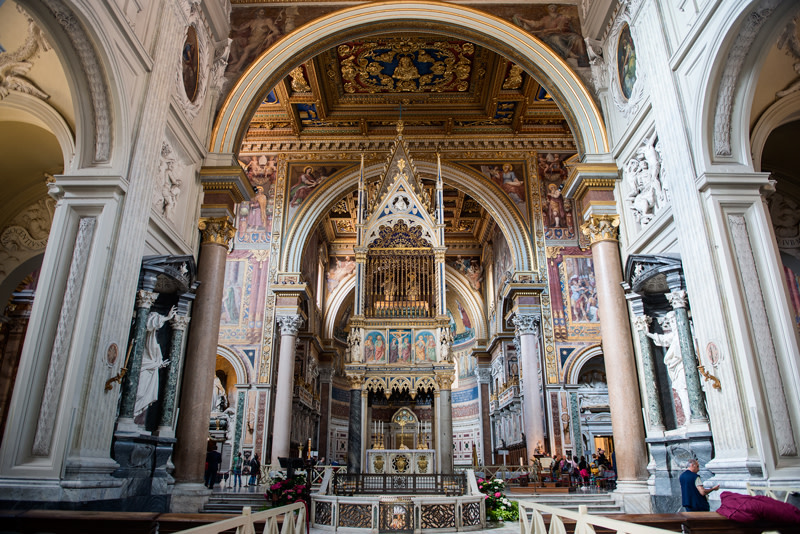 San Giovanni in Laterano
San Giovanni in LateranoThis is the cathedral church of Rome, originally built by Emperor Constantine on his own property. An imposing basilica which has undergone many renovation works, in particular, the baroque-style ones entrusted to Borromini, Bernini’s eternal rival. The church houses the remains of the heads of Peter and Paul and a piece of the Last Supper’s table, which is shown to the public on Easter. Up to the Unification of Italy, this was the church where the popes were consecrated. The apse opening onto the piazza and sparkling with mosaics dates back to the 1800s.
The nearby Santa Croce in Gerusalemme has a spectacular 18th-century façade.
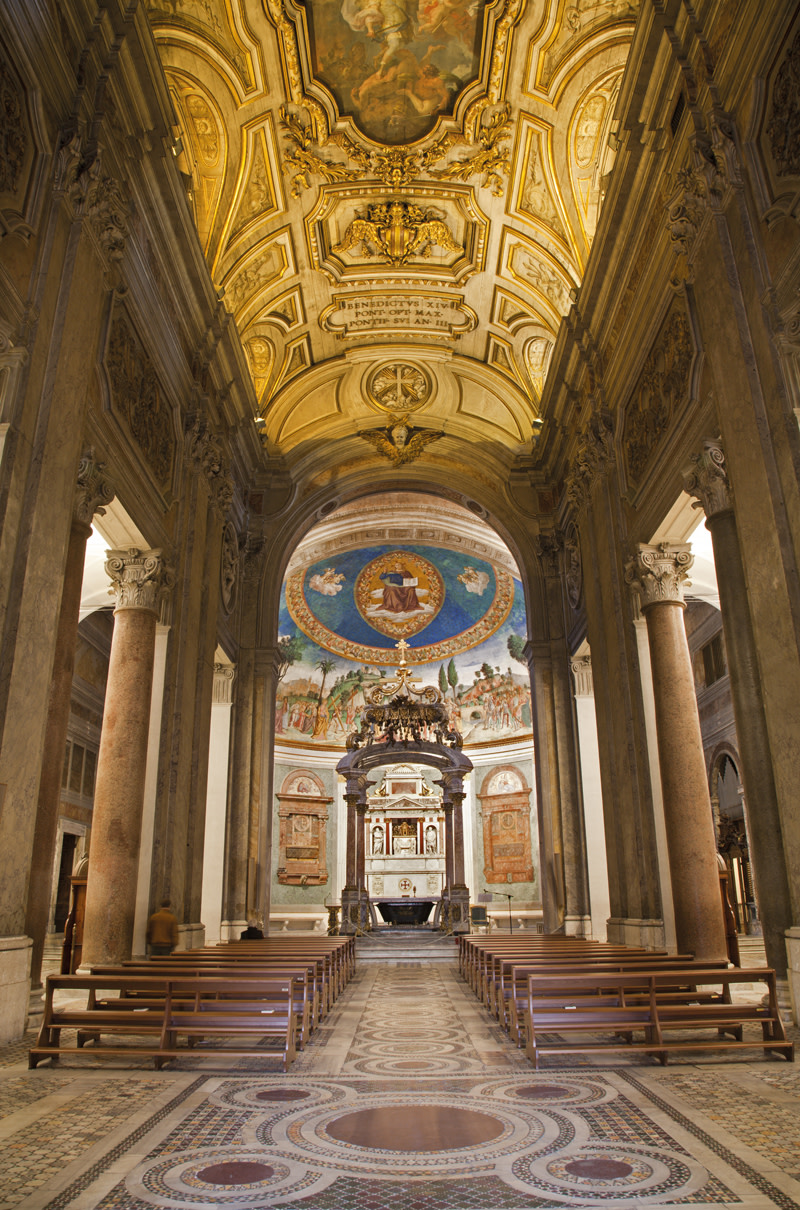 Santa Croce in Gerusalemme
Santa Croce in GerusalemmeThe church is believed to have been built by the mother of Emperor Constantine, Saint Helena, by using soil from Jerusalem and pieces of Jesus’s cross. From here, by going northwards, we reach San Lorenzo Fuori le Mura, at the Verano, the city’s monumental cemetery.
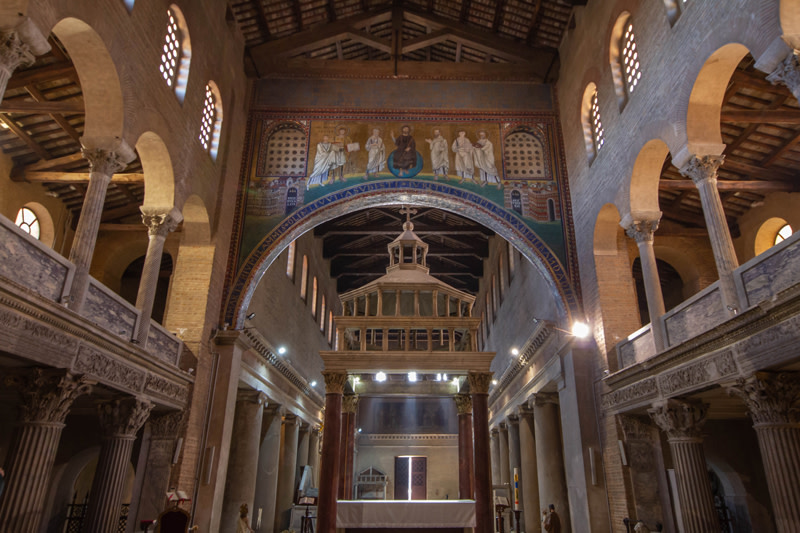 San Lorenzo Fuori le Mura
San Lorenzo Fuori le MuraDedicated to the Spanish saint, this church was built, like all the others, by Emperor Constantine. As it was bombed in 1943, only part of the 13th-century mosaics remain today, in addition to its peculiar appearance that Pope Honorius III created by joining two churches together so that one became the transept of the other. The church leads to the catacomb of Ciriaca, where the saint is buried.
At this point, we arrive at Santa Maria Maggiore through the San Lorenzo Gate.
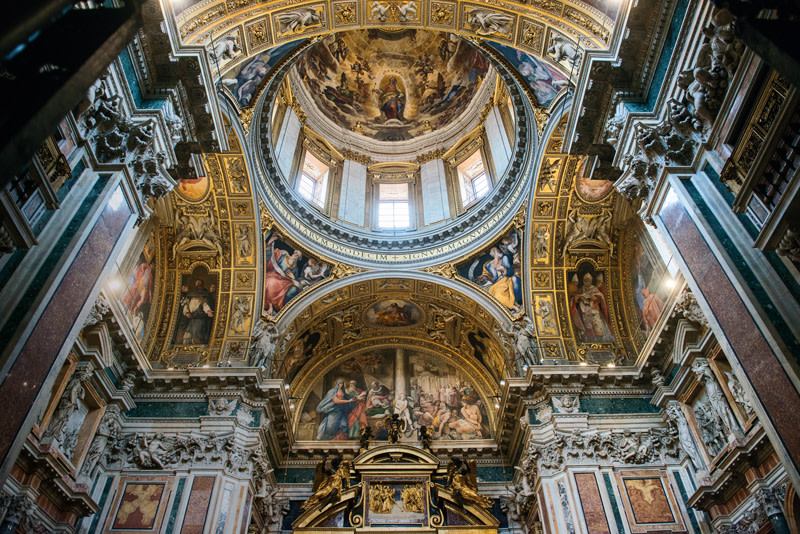 Basilica di Santa Maria Maggiore
Basilica di Santa Maria MaggioreLegend has it that this is the place where, on August 5 of the year 352, snow miraculously fell. Actually, the church dates back to the Council of Ephesus, held one century later, which declared Mary as Mother of God. In addition, in fact, to the precious fifth-century mosaics depicting Old Testament and New Testament events along the nave, the church houses also 13th-century mosaics dedicated to the Virgin Mary in the apse by Jacopo Torriti. Enlarged and altered many times, the church still features, protected by the 18th-century façade, the 13th-century one covered with mosaics. It is also the only church having another Sistine Chapel, built by Pope Sixtus V. And, in addition to Bernini’s tomb, the church houses the world’s oldest sculptural Nativity Scene by Arnolfo di Cambio.
As the experts suggest, St. Peter’s alone is worth one full day.
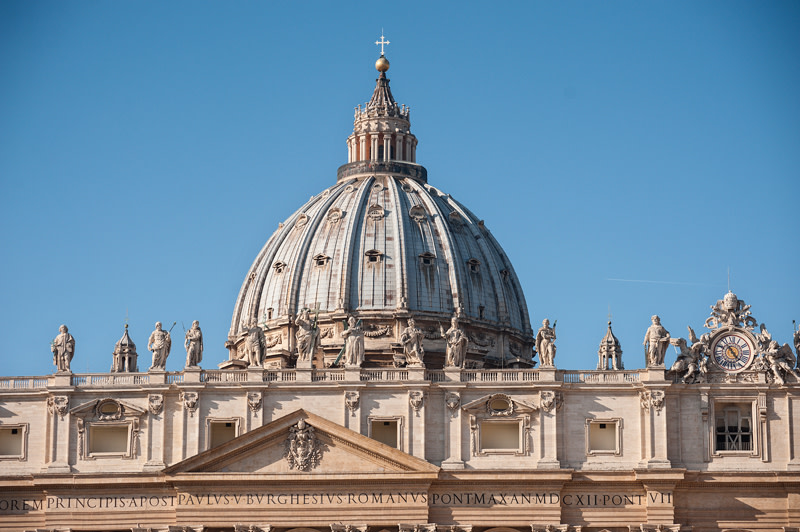 San Pietro
San PietroHere everything is grand. Starting with the elliptical colonnade, 340 m. long and 240 m. wide, that Bernini designed, in the mid-1600s, as if it were two arms embracing humanity. The façade was designed by Maderno, the last of a long list of architects who worked on the construction of the basilica which, being 219 m. long and 155 m. wide, can accommodate up to 60 thousand people, about twice as much as the Duomo of Milan. A source of joy and torment for the Catholic Church, the basilica’s construction contributed to the Protestant Reformation because of the continuous granting of indulgences needed to meet the costs. Instead of going on restoring the ancient basilica, in fact, Pope Julius II, in the early 1500s, decided to build a new one, which was completed nearly 130 years later by a number of famous architects- from Giuliano da Sangallo to Bramante, from Raphael to Michelangelo up to Maderno, who slightly extended the central plan designed by Michelangelo, having to comply with the new Tridentine rules which imposed the construction of Latin cross plan churches. Among the basilica’s masterworks are Michelangelo’s Pietà, Bernini’s Baldachin with the Chair of St. Peter rising at the end of the aisles lined with 45 side altars and 11 chapels, and the saint’s statue by Arnolfo di Cambio. And if you’re not too tired yet (there is an elevator though), climb up the 537 steps leading to the top of Michelangelo’s dome.






